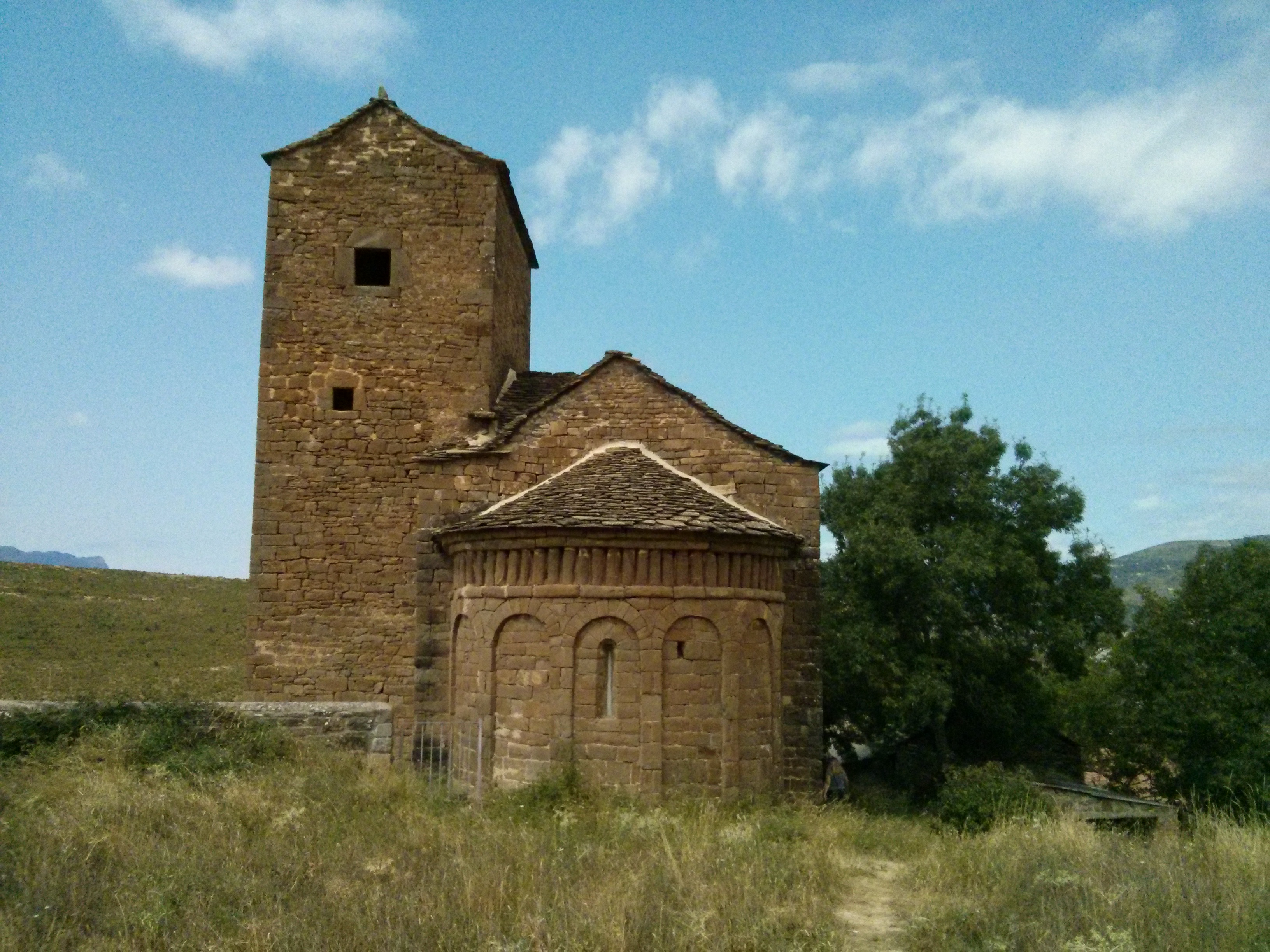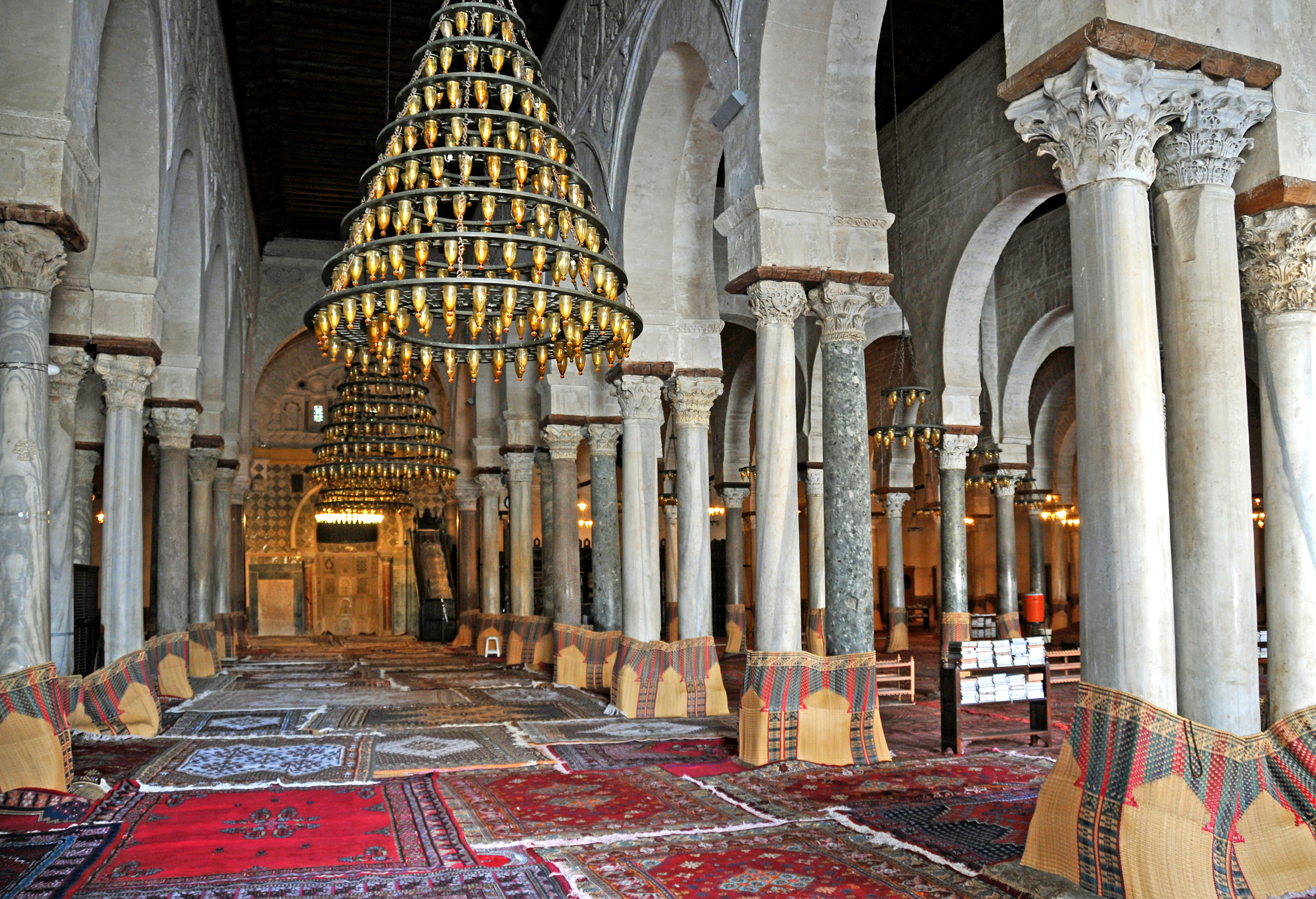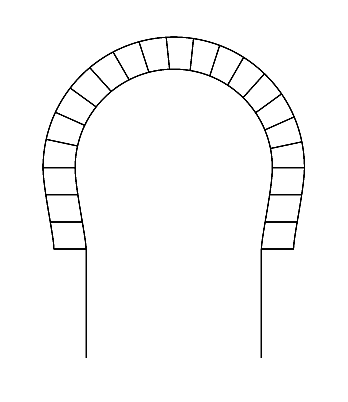|
Serrablo Churches
The Serrablo Churches (Spanish: Iglesias del Serrablo) ( Aragonese: Ilesias de Sarrablo) are a group of early-romanesque and mozarabic churches located in small villages of Alto Gállego (Huesca, Aragon, Spain). The churches are thought to have been built by the mozarabic presence in the area between the 10th and 11th century, a time in which Serrablo was bordered by the moorish state of Al-Andalus. These churches (as identified by the regional comarca) are: ''San Bartolomé de Gavín, Santa Eulalia de Susín, San Pedro de Larrade, San Andrés de Satue, San Juan de Orús, San Pedro de Lasieso, San Juan de Busa, Santa Eulalia de Orós Bajo, San Martín de Olivan, Santa María de Isún de Basa, San Juan y Santa María Espierre, San Martín de Ordovés, San Miguel de Orna, Monasterio de San Pelay, Iglesia de los Santos Reyes de Javierrelatre y San Miguel de Latre, San Salvador de Basarán.'' Architectural Features The churches share many notable features, most of them (with ... [...More Info...] [...Related Items...] OR: [Wikipedia] [Google] [Baidu] |
Isún De Basa
Isún de Basa is a village under the local government of the municipality of Sabiñánigo, Alto Gállego, Huesca, Aragon Aragon ( , ; Spanish and an, Aragón ; ca, Aragó ) is an autonomous community in Spain, coextensive with the medieval Kingdom of Aragon. In northeastern Spain, the Aragonese autonomous community comprises three provinces (from north to sou ..., Spain. References Populated places in the Province of Huesca Sabiñánigo {{huesca-geo-stub ... [...More Info...] [...Related Items...] OR: [Wikipedia] [Google] [Baidu] |
Bien De Interés Cultural
A Bien de Interés Cultural is a category of the heritage register in Spain. The term is also used in Venezuela and other Spanish-speaking countries. The term literally means a "good of cultural interest" ("goods" in the economic sense) and includes not only material heritage (cultural property), like monuments or movable works of art, but also intangible cultural heritage, such as the Silbo Gomero language. Some ''bienes'' enjoy international protection as World Heritage Sites or Masterpieces of the Oral and Intangible Heritage of Humanity. History In Spain, the category of ''Bien de Interés Cultural'' dates from 1985 when it replaced the former heritage category of '' Monumento nacional ''(national monument) in order to extend protection to a wider range of cultural property. The category has been translated as "Cultural Interest Asset". ''Monumentos'' are now identified as one of the sub-categories of ''Bien de Interés Cultural.'' Sub-categories The movable heritage d ... [...More Info...] [...Related Items...] OR: [Wikipedia] [Google] [Baidu] |
Biescas San Juan De Busa 864
Biescas () is a municipality of northeastern Spain close to the border with France, in the midst of the Pyrenees in the province of Huesca. The name seems to provide from the term ''bizka'', which means "hill" in a Proto-Indo-European language. The town of Biescas is located at 875 meters altitude on the banks of the Gállego river. The municipality extends along a small plain and includes the canyon to access to the Tena Valley. At 72 km north of the main city Huesca, Biescas is a communication hub between the regions of Jacetania and Sobrarbe. The town is strategically located to crossing the Gállego river, as a link between the valleys of Tena and Ara. Demography and population entities The municipality extends over an area of 189.09 km2. Distributing the town main parallel to the river, with two areas of different altitude delimiting two historic districts: to the west, the district of San Pedro, which includes an area for expansion and new constructions, and ... [...More Info...] [...Related Items...] OR: [Wikipedia] [Google] [Baidu] |
Apse
In architecture, an apse (plural apses; from Latin 'arch, vault' from Ancient Greek 'arch'; sometimes written apsis, plural apsides) is a semicircular recess covered with a hemispherical vault or semi-dome, also known as an ''exedra''. In Byzantine, Romanesque, and Gothic Christian church (including cathedral and abbey) architecture, the term is applied to a semi-circular or polygonal termination of the main building at the liturgical east end (where the altar is), regardless of the shape of the roof, which may be flat, sloping, domed, or hemispherical. Smaller apses are found elsewhere, especially in shrines. Definition An apse is a semicircular recess, often covered with a hemispherical vault. Commonly, the apse of a church, cathedral or basilica is the semicircular or polygonal termination to the choir or sanctuary, or sometimes at the end of an aisle. Smaller apses are sometimes built in other parts of the church, especially for reliquaries or shrines of saints. Hi ... [...More Info...] [...Related Items...] OR: [Wikipedia] [Google] [Baidu] |
Bell Tower
A bell tower is a tower that contains one or more bells, or that is designed to hold bells even if it has none. Such a tower commonly serves as part of a Christian church, and will contain church bells, but there are also many secular bell towers, often part of a municipal building, an educational establishment, or a tower built specifically to house a carillon. Church bell towers often incorporate clocks, and secular towers usually do, as a public service. The term campanile (, also , ), deriving from the Italian ''campanile'', which in turn derives from ''campana'', meaning "bell", is synonymous with ''bell tower''; though in English usage campanile tends to be used to refer to a free standing bell tower. A bell tower may also in some traditions be called a belfry, though this term may also refer specifically to the substructure that houses the bells and the ringers rather than the complete tower. The tallest free-standing bell tower in the world, high, is the Mortegliano B ... [...More Info...] [...Related Items...] OR: [Wikipedia] [Google] [Baidu] |
Great Mosque Of Kairouan
The Great Mosque of Kairouan ( ar, جامع القيروان الأكبر), also known as the Mosque of Uqba (), is a mosque situated in the UNESCO World Heritage town of Kairouan, Tunisia and is one of the most impressive and largest Islamic monuments in North Africa. Established by the Arab general Uqba ibn Nafi in the year 50 AH (670AD/CE) at the founding of the city of Kairouan, the mosque occupies an area of over . It is one of the oldest places of worship in the Islamic world, and is a model for all later mosques in the Maghreb. Great Mosque of Kairouan (discoverislamicart.org) '' Its perimeter, of about , contains a hypostyle prayer hall, a marble-paved courtyard and a square minaret. In addition to its spiritual prestige, the Mosque of Uqba is one of the masterpieces of Islamic architecture, [...More Info...] [...Related Items...] OR: [Wikipedia] [Google] [Baidu] |
Islam
Islam (; ar, ۘالِإسلَام, , ) is an Abrahamic religions, Abrahamic Monotheism#Islam, monotheistic religion centred primarily around the Quran, a religious text considered by Muslims to be the direct word of God in Islam, God (or ''Allah'') as it was revealed to Muhammad, the Muhammad in Islam, main and final Islamic prophet.Peters, F. E. 2009. "Allāh." In , edited by J. L. Esposito. Oxford: Oxford University Press. . (See alsoquick reference) "[T]he Muslims' understanding of Allāh is based...on the Qurʿān's public witness. Allāh is Unique, the Creator, Sovereign, and Judge of mankind. It is Allāh who directs the universe through his direct action on nature and who has guided human history through his prophets, Abraham, with whom he made his covenant, Moses/Moosa, Jesus/Eesa, and Muḥammad, through all of whom he founded his chosen communities, the 'Peoples of the Book.'" It is the Major religious groups, world's second-largest religion behind Christianity, w ... [...More Info...] [...Related Items...] OR: [Wikipedia] [Google] [Baidu] |
Alfiz
The alfiz (, from Andalusi Arabic ''alḥíz'', from Standard Arabic ''alḥáyyiz'', meaning 'the container'; "''DRAE. Diccionario de la Lengua Española. Vigésima segunda edición''", Espasa Calpe, S.A, 2003) is an architectonic adornment, consisting of a moulding, usually a rectangular panel, which encloses the outward side of an arch. It is an architectonic ornament of origin, used in , Asturian, |
Horseshoe Arch
The horseshoe arch (; Spanish: "arco de herradura"), also called the Moorish arch and the keyhole arch, is an emblematic arch of Islamic architecture, especially Moorish architecture. Horseshoe arches can take rounded, pointed or lobed form. History Origins and early uses The origins of the horseshoe arch are controversial. It appeared in pre-Islamic Sasanian architecture such as the Taq-i Kasra in present-day Iraq and the Palace of Ardashir in southwestern Iran (3rd century CE). It also appeared in Late Roman or Byzantine architecture in pre-Islamic Syria, where the form was used in the Baptistery of Saint Jacob at Nusaybin (4th century CE) and in Qasr Ibn Wardan (564 CE). However, the horseshoe arch allowed more height than the classical (semi-circular) arch as well as better aesthetic and decorative use. Muslims used this arch to develop their famous ultra-semicircular arch, around which the whole of Islamic architecture evolved, thus more likely suggesting that the hor ... [...More Info...] [...Related Items...] OR: [Wikipedia] [Google] [Baidu] |


.jpg)


.jpg)
